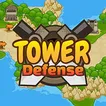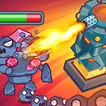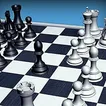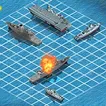












































































Tower Defense Games: Strategy, Mechanics, and Community
Tower defense games have emerged as a genre that captivates players with its unique blend of strategic planning and real-time tactics. At its core, the gameplay involves defending a territory or path against waves of attacking enemies by constructing and upgrading various towers with distinct abilities. The strategic depth of these games lies in the decision-making process: where to place towers for optimal coverage, when to upgrade them, and how to allocate resources effectively.
The mechanics of tower defense games are designed to challenge the player’s foresight and adaptability. Each level typically introduces new types of enemies with specific strengths and weaknesses, compelling players to continually refine their strategies. The satisfaction derived from successfully repelling hordes of invaders and protecting one’s base taps into the psychological rewards of problem-solving and crisis management.
Beyond the individual gaming experience, tower defense games have fostered a dedicated community. Players share strategies, discuss tower synergies, and collaborate to overcome the most challenging levels. This social aspect extends the life of the games, as the shared knowledge and experiences contribute to a collective understanding of the genre.
The community’s engagement has also influenced the evolution of tower defense games. Developers take cues from player feedback, leading to innovations in game design and mechanics that keep the genre fresh and exciting. As players and creators interact, tower defense games continue to evolve, ensuring their place in the hearts of strategy enthusiasts for years to come.
Mastering Tower Defense Games: Tactics and Defense Strategies
Mastering the art of tower defense games is akin to becoming a grand strategist on the digital battlefield. The key to success lies in mastering tactics and defense strategies that evolve with each level and enemy wave. Players must learn the art of tower placement, ensuring each structure’s range and abilities are optimized to create an impenetrable defense. Strategic positioning can mean the difference between victory and defeat, as the right combination of towers can synergize to maximize damage and control the flow of enemies.
Resource management is another critical aspect, as players must decide when to invest in new towers or upgrade existing ones. The choice between breadth and depth—whether to build more towers or enhance the ones you have—can significantly alter the course of the game. Upgrading towers often provides the firepower needed to take down tougher adversaries, but spreading out defenses can prevent enemies from slipping through the cracks.
Adaptability is essential, as each new wave may introduce enemies with unique abilities that can bypass or dismantle your carefully laid plans. Players must be ready to adjust their strategies on the fly, reallocating resources and repositioning towers to counter these new threats. This dynamic challenge keeps players engaged and constantly learning.
The psychological rewards of mastering tower defense strategies are profound. There’s a deep sense of satisfaction in watching a well-crafted defense obliterate wave after wave of enemies, a testament to the player’s foresight and tactical prowess. The joy of perfecting a defense strategy is a driving force that keeps players returning to tower defense games, always seeking to improve and outdo their past performances.
Community and Culture: The Social Fabric of Tower Defense Games
The social fabric of tower defense games is as intricate and robust as the strategies within the games themselves. A vibrant community has blossomed, with players from all corners of the globe connecting over their shared passion for these strategic battles. Online forums and social media platforms buzz with discussions on the latest tactics, tower combinations, and level difficulties. These digital gathering spaces serve as hubs for knowledge exchange, where novices can seek advice from seasoned veterans, and experts can debate the finer points of advanced strategies.
This culture of sharing and collaboration has been instrumental in extending the lifespan of tower defense games. Strategy guides, written by the community and for the community, are constantly updated and refined as new content and challenges emerge. Players take pride in contributing their insights, often creating detailed guides and tutorials to help others overcome particularly tough stages.
The sense of camaraderie is palpable as players rally together to tackle community-created challenges or celebrate each other’s victories. In-game achievements are not just personal triumphs but are seen as collective conquests, celebrated by the community as a whole. This shared sense of achievement and the joy of collaborative problem-solving are what make the community around tower defense games uniquely cohesive and enduring.
Moreover, the community’s influence extends beyond gameplay into the very development of the genre. Player feedback and discussions can inspire new features and mechanics, demonstrating the symbiotic relationship between the players and creators. In this way, the community is not just consuming content but actively shaping the future of tower defense games, ensuring that the genre remains responsive to its most passionate and engaged players.
The Future of Tower Defense: Emerging Trends and Evolutions
The future of tower defense games is poised on the cutting edge of innovation, with emerging trends and technological advancements shaping what’s next for this strategic genre. As artificial intelligence becomes more sophisticated, we can anticipate tower defense games that offer more dynamic and unpredictable enemy behaviors, challenging players to devise even more complex strategies. The integration of virtual and augmented reality technologies could transform the player’s experience, offering immersive environments where strategies can be executed and battles observed from a god-like perspective.
Another trend is the increasing personalization of gameplay. Future tower defense games may include adaptive difficulty levels that respond to the player’s skill, ensuring a consistently challenging experience. Moreover, the potential for more intricate storylines and world-building within games could deepen the emotional investment and enhance the overall engagement.
The social aspect of gaming is likely to evolve as well, with more robust online multiplayer experiences and community-driven content. Players could see an expansion of collaborative and competitive modes, where teamwork and competition drive the genre to new heights. The rise of esports has already demonstrated the potential for competitive play to captivate large audiences, and tower defense games could become a part of this phenomenon.
Lastly, the evolution of tower defense games will likely be influenced by player creativity and input. User-generated content tools may become more prevalent, allowing players to design their own levels and challenges, further blurring the lines between player and creator.
As technology and player expectations advance, tower defense games will continue to evolve, offering new layers of strategic depth and community engagement. The genre’s adaptability and the players’ dedication suggest that tower defense games will remain a staple in the gaming world, continually finding new ways to challenge and enthuse its ardent fan base.